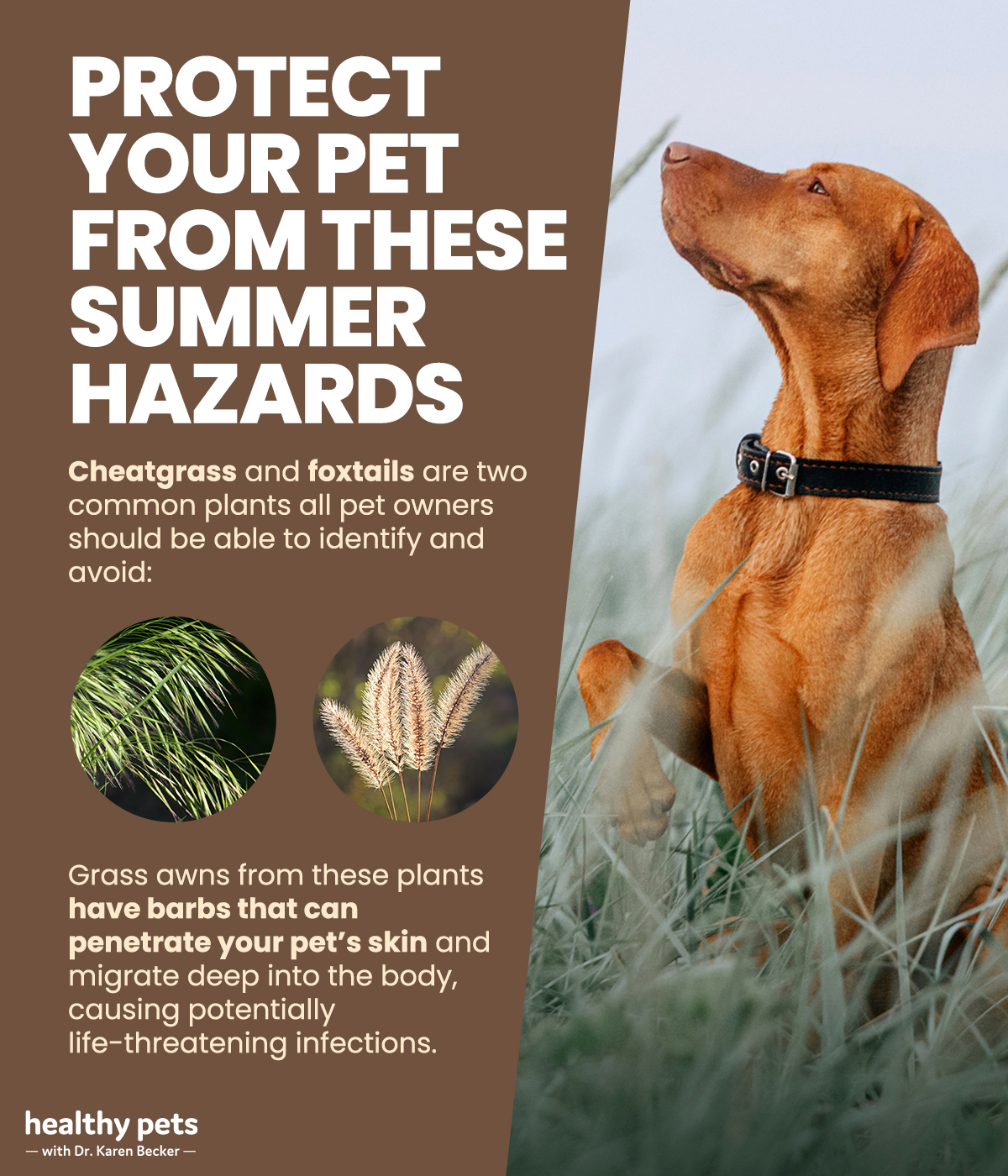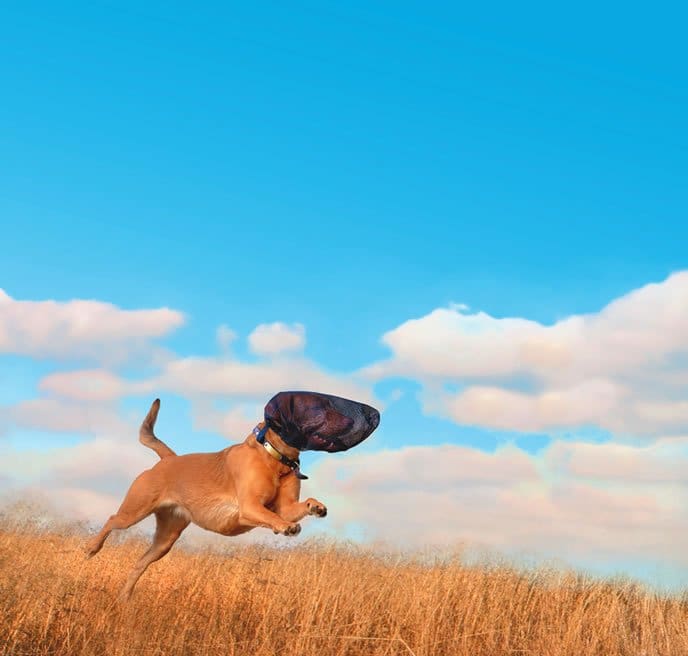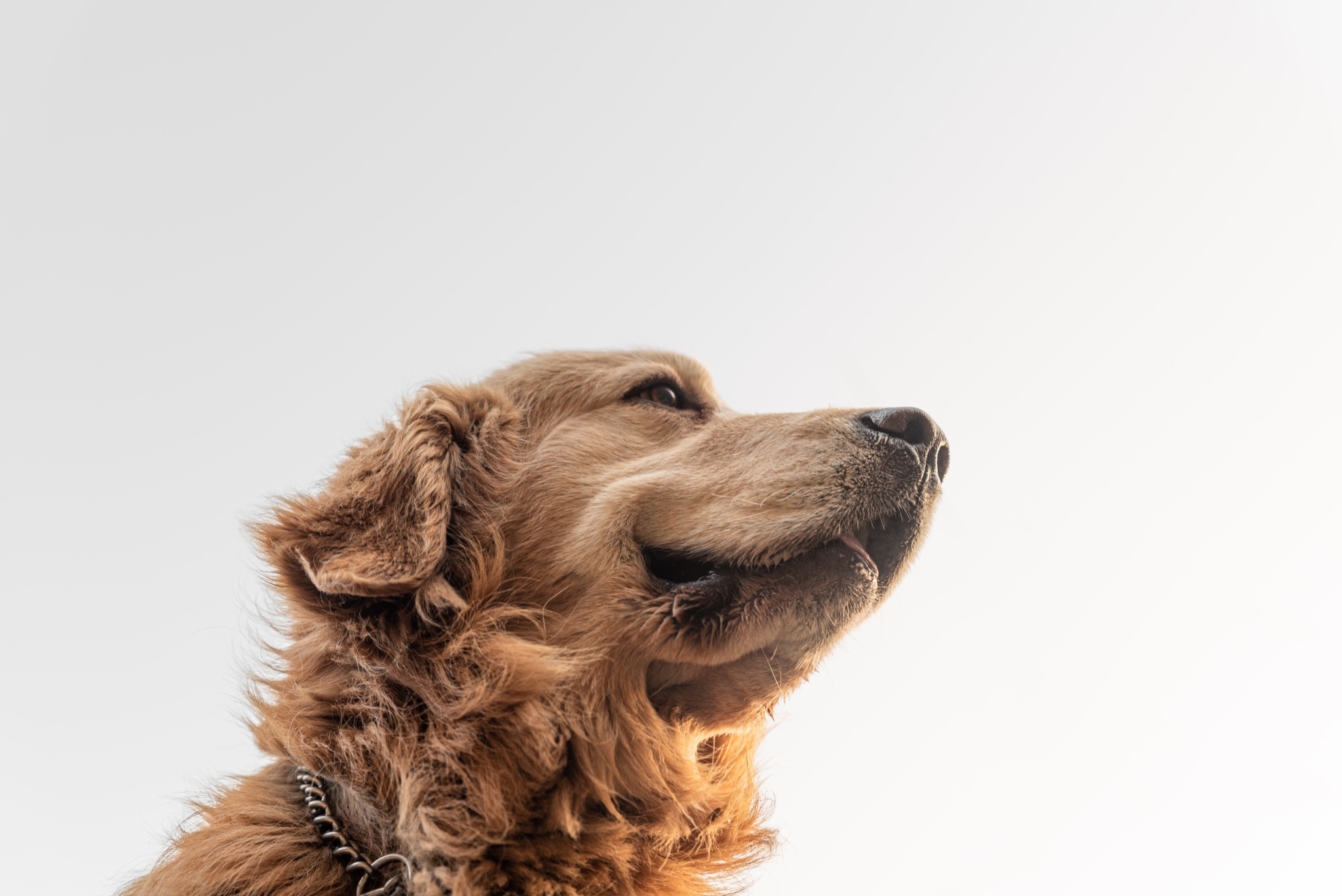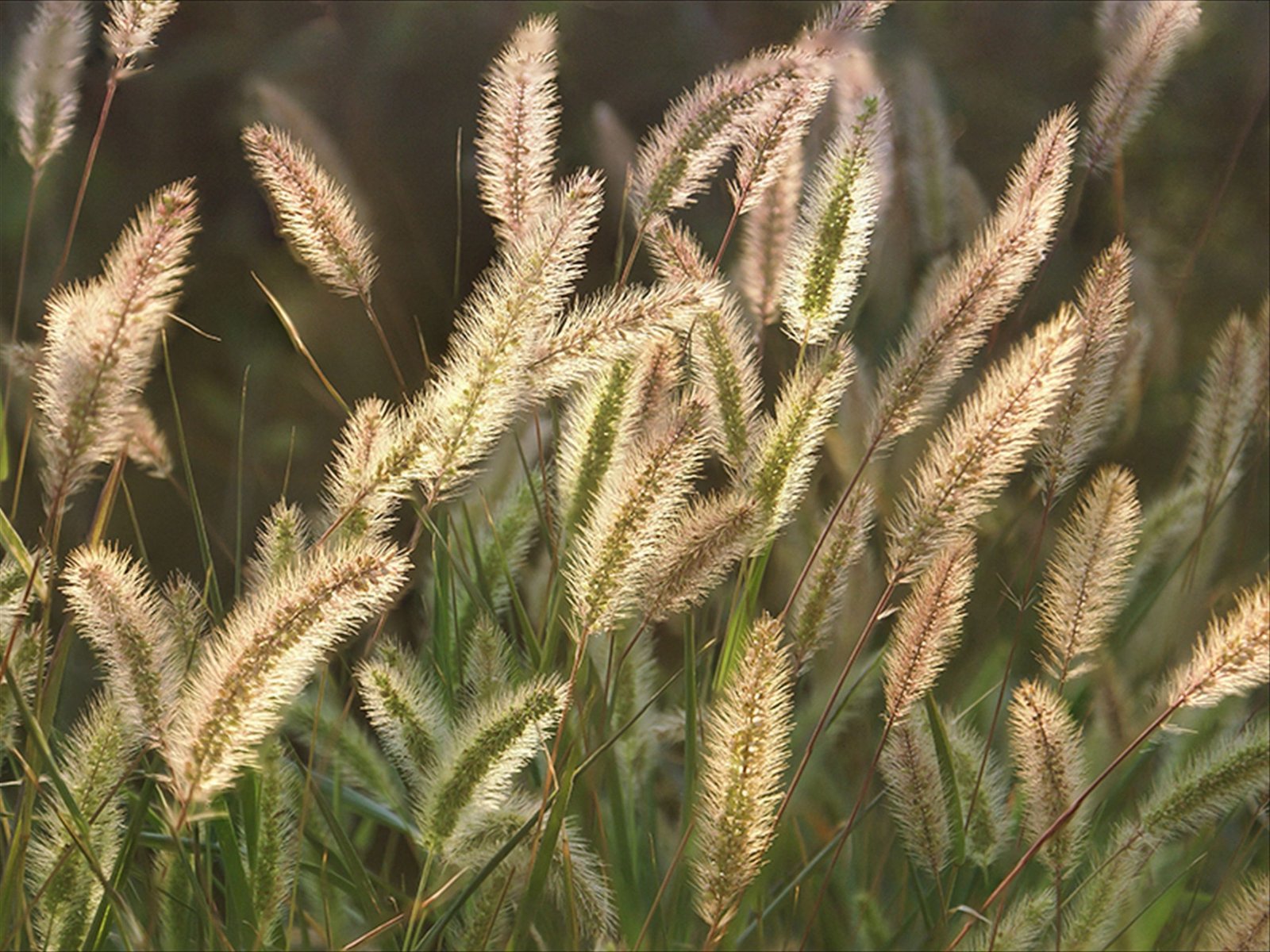To protect your dog from foxtails and cheatgrass, prevent your pet from running through fields of wild grass and weeds, avoid letting them eat or sniff weeds, clear the weeds in your yard, and regularly check their paws and coat for foxtails.

Credit: twitter.com
Understanding The Dangers Of Foxtails And Cheatgrass
Protect your dog from foxtails and cheatgrass by keeping their yard clear of weeds, avoiding grassy fields and roadsides, and regularly inspecting their coat and paws for any signs of foxtails or cheatgrass. Trim your dog’s hair and keep them well-groomed to minimize the risk of these dangerous plants burrowing into their skin.
What Are Foxtails And Cheatgrass?
Foxtails and cheatgrass are types of grasses that can pose serious risks to dogs. Foxtails are named after their bushy appearance, resembling the tail of a fox. They have sharp, pointy seeds that easily attach to a dog’s fur, paws, or enter their ears, nose, or other orifices. Cheatgrass, on the other hand, is a highly invasive weed that has barbed seeds. These seeds can also latch onto a dog’s coat or penetrate their skin, causing a range of health problems.Why Are Foxtails And Cheatgrass Dangerous For Dogs?
Foxtails and cheatgrass can cause a variety of health issues in dogs. When these grasses attach to a dog, they can burrow into the skin and cause painful abscesses or infections. Moreover, they can migrate to different parts of the body, such as the lungs or abdomen, leading to serious complications. Additionally, foxtails and cheatgrass are known to cause discomfort and irritation. If the seeds get lodged in a dog’s ears, they can lead to ear infections or even perforate the eardrum. Ingesting these grasses can also be dangerous. If a dog swallows the seeds, they can cause digestive problems or become stuck in the airways, leading to choking or respiratory issues. Preventing exposure to foxtails and cheatgrass is crucial to protect your dog’s well-being. Regularly inspecting your dog’s coat and paws after outdoor activities is essential to remove any attached seeds. Keeping your yard clear of these grasses and maintaining well-groomed areas for your dog to play can significantly reduce the risk of encountering foxtails and cheatgrass. By understanding the dangers and taking preventive measures, you can ensure your furry friend stays safe and healthy.Preventative Measures For Protecting Your Dog
To protect your dog from foxtails and cheatgrass, prevent your pet from running in grassy fields and avoid letting them eat or sniff weeds. Clear the weeds in your yard and check your dog’s paws and coat for awns after being outdoors.
Additionally, keep the weeds in your yard trimmed and consider trimming your dog’s nails and coat for added protection.
When it comes to protecting your furry friend from foxtails and cheatgrass, prevention is key. By taking a few simple steps, you can significantly reduce the risk of your dog encountering these potentially harmful plants. Here are some preventive measures you can take to keep your dog safe:
Clearing The Weeds In Your Yard
One of the most effective ways to protect your dog is to clear any weeds or wild grasses in your yard. These plants can harbor foxtails and cheatgrass, posing a threat to your dog’s health. Regularly mow your lawn and remove any unwanted plants that might be growing. By keeping your yard clear, you decrease the chances of your dog coming into contact with these harmful weeds.
Keeping Your Dog Away From Wild Grasses
When going for walks or hikes with your dog, it’s important to keep them away from wild grasses and weeds. Avoid areas where foxtails and cheatgrass are prevalent, especially during their peak seasons. Stick to well-maintained trails and avoid overgrown or unmaintained areas where these plants tend to grow. By being mindful of your surroundings, you can minimize the risk of your dog encountering these hazardous plants.
Checking Your Dog’s Paws And Coat After Outdoor Activities
After outdoor activities, thoroughly check your dog’s paws and coat for any foxtails or cheatgrass. These plants have barbed seeds that can easily become lodged between your dog’s toes or in their fur. Transfer these seeds can cause irritation, infection, or even lead to more serious health issues if left untreated. Regularly inspecting your dog’s paws and coat allows you to remove any potential threats and keep them safe.
Trimming Your Dog’s Nails And Coat
Trimming your dog’s nails and coat is another proactive step you can take to protect them from foxtails and cheatgrass. By keeping their nails properly trimmed, you reduce the risk of seeds getting stuck or embedded in the nail bed. Additionally, maintaining a shorter coat reduces the chances of seeds becoming entangled in their fur. Proper grooming helps create a barrier against these plants and minimizes the chances of them causing harm to your beloved pet.
Signs And Symptoms Of Foxtails And Cheatgrass In Dogs
Dogs are naturally curious creatures who love exploring the outdoors. However, this curiosity can sometimes lead to encounters with foxtails and cheatgrass, which can pose serious risks to their health. It’s essential for dog owners to be aware of the signs and symptoms that indicate their furry companions may have come into contact with these dangerous plants.
Red Swelling Between The Toes
One of the telltale signs that your dog may have encountered foxtails or cheatgrass is red swelling between their toes. These plants have sharp, barbed seeds that can easily embed themselves in the delicate skin between the toes. As a result, you may notice your dog constantly licking or fussing over that area, accompanied by visible redness and swelling.
Swollen Watery Eyes
Another indication that your dog has encountered foxtails or cheatgrass is swollen watery eyes. These plants can easily get lodged in a dog’s eyes, causing irritation and inflammation. If you notice your dog squinting, tearing up excessively, or rubbing their eyes frequently, it’s crucial to inspect their eyes carefully for any signs of plant debris.
Discharge And Excessive Licking
When foxtails or cheatgrass become lodged in sensitive areas of your dog’s body, such as their ears, nose, or genitals, they can cause discomfort and lead to excessive discharge. You may notice your dog constantly licking or pawing at these areas, indicating their discomfort and trying to remove the plant material. It’s important to address this issue promptly to prevent further complications.
Invasion Of Other Body Parts
In some cases, foxtails and cheatgrass can migrate to other body parts, causing more severe health issues. These plants have been known to invade internal organs such as the lungs, heart, and even the brain, leading to abscesses and severe infections. If you observe any unusual symptoms in your dog, such as difficulty breathing, lethargy, or neurological abnormalities, seeking veterinary attention immediately is crucial.
Being able to recognize the signs and symptoms of foxtails and cheatgrass in dogs is essential for ensuring your pet’s well-being. If you suspect that your dog has come into contact with these dangerous plants, it is best to consult with a veterinarian who can provide appropriate treatment and prevent any potential complications.
How To Remove Foxtails And Cheatgrass From Your Dog
One of the most important areas to check for foxtails and cheatgrass on your dog is between their toes. These grass awns have a tendency to get lodged in this area, causing discomfort and potentially leading to infection. Take the time to inspect your dog’s paws regularly, paying close attention to the spaces between their toes. Look for any signs of redness, swelling, or discharge.
If you find any foxtails or cheatgrass between your dog’s toes, it’s crucial to remove them promptly. To do this, you can use grooming tools such as tweezers or a grooming brush with fine teeth. Carefully grasp the grass awn at the base and gently pull it out in the same direction it entered. Be cautious not to break the awn, as this may cause further complications. If you’re unsure or uncomfortable with removing the grass awn yourself, consult a professional groomer or veterinarian for assistance.
In some cases, the foxtails or cheatgrass may become deeply embedded or difficult to remove, especially if they have migrated further into your dog’s body. If you’re unable to remove the grass awn or if your dog is showing signs of discomfort or infection, it’s crucial to consult a veterinarian. They have the necessary expertise and equipment to safely and effectively remove the grass awn and provide appropriate treatment if needed.
Additional Resources For Protecting Your Dog
When it comes to keeping your furry friend safe from foxtails and cheatgrass, it’s always beneficial to have additional resources for guidance. Whether you’re looking for tips from pet insurance providers or advice from veterinarians, these resources can provide valuable insights on preventing foxtail emergencies during outdoor activities. Read on to discover some expert recommendations that will help safeguard your beloved canine companion.
Tips From Pet Insurance Providers
Protecting your dog from foxtails and cheatgrass starts with proactive measures, and pet insurance providers have valuable recommendations to offer. Here are some tips to keep in mind:
- Ensure your dog’s insurance coverage includes protection against foxtail-related injuries.
- Regularly groom your dog to remove any foxtails or cheatgrass that may have become lodged in their fur.
- Take preventive measures, such as maintaining a well-maintained yard free from weeds and grasses that can pose a risk to your dog’s health.
- Consider investing in behavioral training to teach your dog to avoid areas with foxtails and cheatgrass during outdoor activities.
Advice From Veterinarians
Veterinarians play a crucial role in ensuring the well-being of our four-legged companions. When it comes to protecting your dog from foxtails and cheatgrass, they offer valuable advice based on their expertise. Here are some recommendations from veterinarians:
- Keep your dog’s paws and coat clean by thoroughly checking for foxtails and cheatgrass after outdoor excursions.
- Trim your dog’s fur and nails regularly to minimize the chance of foxtails getting tangled in their coat or piercing their skin.
- If you live in areas with high foxtail or cheatgrass prevalence, consider investing in protective gear for your dog, such as specialized hoodies or sweatshirts that cover their head and ears.
- When walking your dog, stick to well-kept areas and avoid overgrown fields and roadsides where foxtails and cheatgrass tend to thrive.
Preventing Foxtail Emergencies During Outdoor Activities
Preventing foxtail emergencies is of utmost importance, especially during outdoor activities. Here are some measures you can take to minimize the risk:
- Keep your dog on a leash and under close supervision to prevent them from venturing into areas with foxtails and cheatgrass.
- Avoid letting your dog eat or sniff weeds and wild grasses, as they may contain foxtails.
- If you notice any signs of discomfort, such as excessive licking, sneezing, or pawing at certain areas, inspect your dog’s paw pads, ears, and underbelly for potential foxtail or cheatgrass-related issues.
- If you suspect that your dog has ingested foxtails or cheatgrass, seek immediate veterinary assistance to prevent complications.
By following these tips from pet insurance providers, veterinarians, and practicing preventive measures during outdoor activities, you can minimize the risk of foxtail emergencies and protect your dog from the potential dangers of foxtails and cheatgrass.

Credit: www.whole-dog-journal.com

Credit: firstvet.com
Frequently Asked Questions For How To Protect Your Dog From Foxtails And Cheatgrass
How Do I Protect My Dog From Cheat Grass?
To protect your dog from cheat grass: 1. Avoid letting your dog run through wild grass and weeds. 2. Don’t let your dog eat or sniff weeds and wild grasses. 3. Clear the weeds in your yard. 4. After being outdoors, check your dog’s paws and coat for cheat grass awns.
5. Seek veterinary care immediately if you suspect your dog has ingested cheat grass.
How Do You Protect Dogs From Foxtails?
To protect dogs from foxtails: 1. Trim weeds in your yard regularly. 2. Keep dogs away from unkempt areas while hiking. 3. Trim dog’s nails and coat to make it harder for foxtails to burrow. 4. Consider using a hoodie or sweatshirt to protect the head and ears in overgrown areas.
5. Check your dog’s paws and coat after outdoor activities for any foxtails.
What If My Dog Eats Cheatgrass?
If your dog eats cheatgrass, it can cause issues if the grass awn goes down the trachea. It can migrate to the heart, lungs, or abdomen and become an abscess. Look out for red swelling between the toes or sudden swollen watery eyes.
What Are The Signs Of Cheat Cheatgrass In Dogs?
Signs of cheatgrass in dogs can include red swelling between the toes, sudden swollen watery eyes, discharge from any orifice, and excessive licking. It can even invade the tear duct or brain. Clear weeds in your yard and check your dog’s paws and coat after outdoor activities to prevent issues.
Conclusion
To protect your furry friend from the dangers of foxtails and cheatgrass, there are a few simple steps you can take. First, keep your yard clear of weeds and wild grasses to minimize exposure. Second, avoid letting your dog explore overgrown or untamed areas where these plants are prevalent.
Third, regularly inspect your dog’s coat and paws after outdoor adventures to catch any foxtails or awns before they cause harm. By following these precautions, you can ensure your dog’s safety and enjoy worry-free outdoor activities together.

